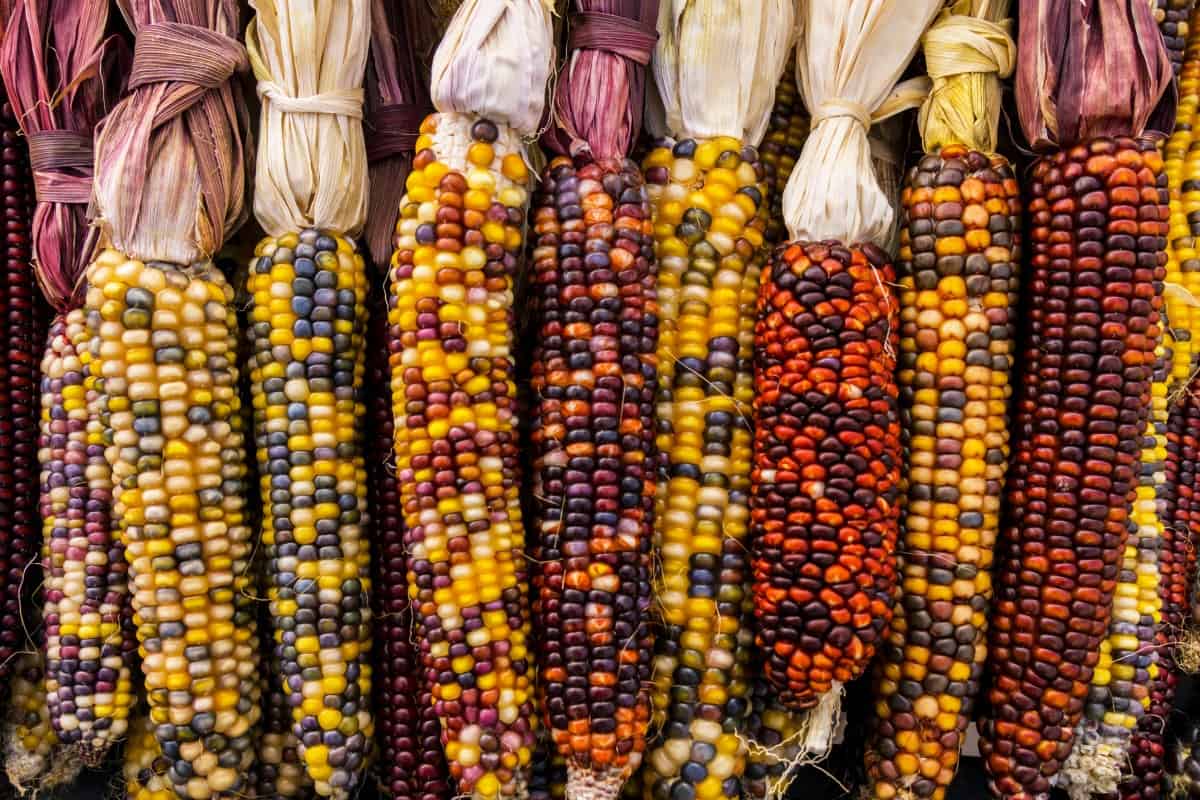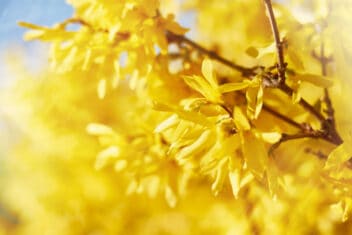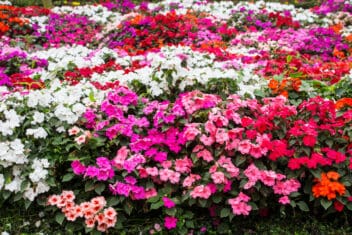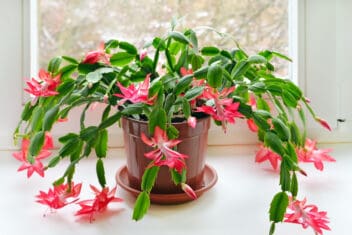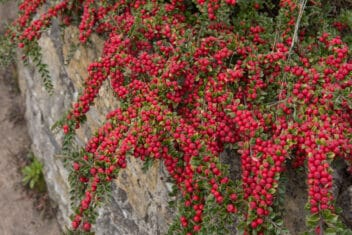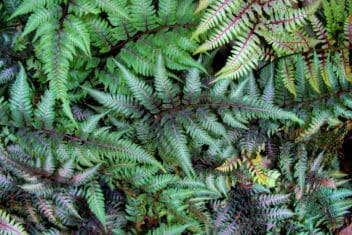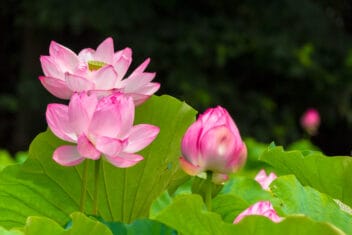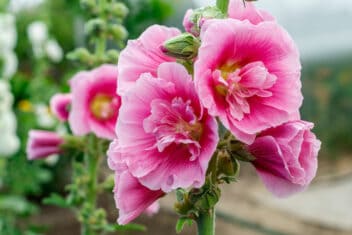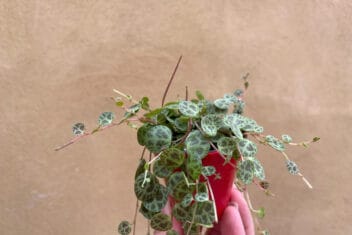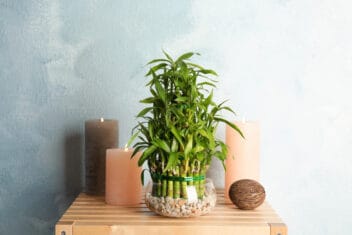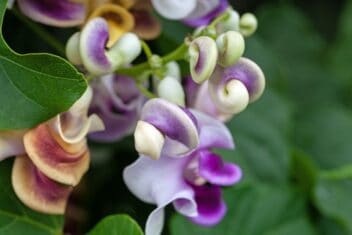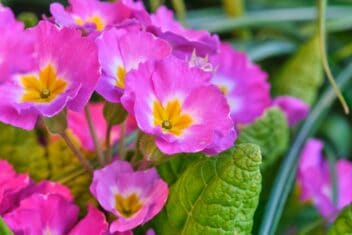Sometimes, it can be hard to justify making room in the garden for crops that ultimately are grown for aesthetics – rather than their value as edible crops.
However, ornamental corn is one of those plants that I always make room for.
I’m able to justify it to my husband – who isn’t big on plants grown purely for their appearances alone – by explaining that it can be used to feed our pigs and chickens after the growing season (and fall decoration season!) has ended. Fortunately, he now loves growing ornamental corn just as much as I do.
This beautiful crop is one that has been grown in the US for centuries – long before the land was even recognized as its own country. Here are some of the best uses for ornamental corn – and some tips on how to grow it in your own backyard garden this summer.
What is Ornamental Corn?
Of the 6 different types of corn – flour, flint, sweet, waxy, pop, and dent – popcorn is probably one of the least commonly grown in the backyard garden. For no good reason, though.
Corn isn’t classified by its color but instead by its kernel type. For the most part, all ornamental corn varieties are derived from pop-type corn. These plants produce small ears that are usually colorful, hard, and perfect for decorating. Sometimes referred to as Indian corn, ornamental corn is prized for its decorative value.
Traditionally, ornamental corn was grown for food by Native Americans in both North and South America. Today, it is mostly grown for ornamental purposes.
How to Grow Ornamental Corn
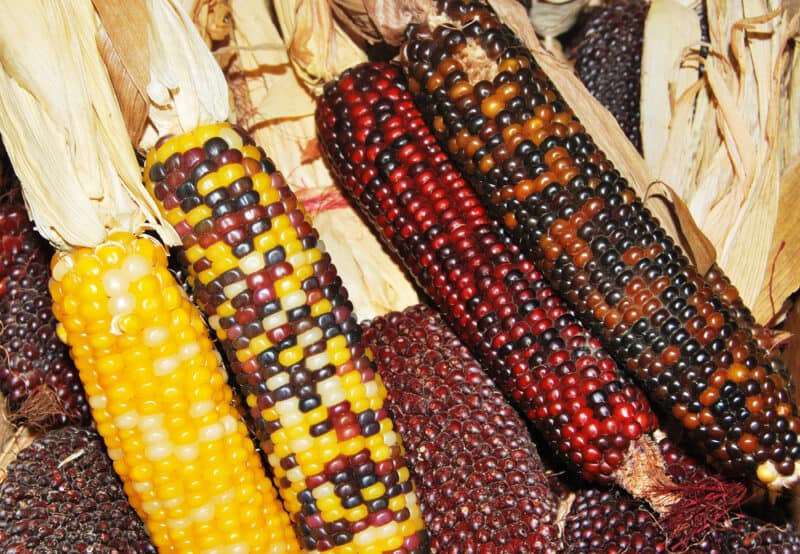
1. Varieties to Consider
There are several different varieties of ornamental corn that you might consider growing in your garden.
Some of the best small-eared types of ornamental corn include:
- Indian Fingers
- Little Boy Blue
- Miniature Pink
- Little Miss Muffet
- Robust Ruby Red
- Little Bell
- Cutie Pink
- Little Bo Peep
- Miniature Blue
- Cutie Pops
If a larger variety is what you have in mind, go with Autumn Explosion, Painted Mountain, Autumn Splendor, Green and Gold Dent, or Indian Art. If you plan on creating your own corn maze, you may want to go with Broom Corn or Maize Corn.
When choosing your varieties of corn, keep in mind that ornamental corn, like all other kinds of corn, cross-pollinate. Therefore, if you are sowing more than one type, you’ll have to keep a distance of 250-feet or more between cultivars. This will prevent intermingling.
2. Planting
Ornamental corn, like all other corn, should always be grown from seed. Select disease-resistant seeds from a reputable nursery.
Plant your seeds in well-draining soil. The weather should be relatively warm. Plant after the danger of frost has passed. In most places, that’s sometime around Memorial Day. Soil temperatures should be around 55-60°F.
Seeds should be planted about 1-2-inches deep and 8-10-inches apart. Large-eared varieties may need to have their seeds planted even further apart (around 10-12-inches, in some cases).
If you’re like me and struggle with spacing your seeds when you plant them, you can always plant indiscriminately and then go back and thin the seedlings later on. Either way, the rows should be about 3-feet apart.
3. Caring For Corn
– Watering
Water your corn plants deeply, either once or twice a week or whenever the soil feels dry about an inch below the soil line. Moisten the soil to the root level.
The best way to water ornamental corn is to do so from below, ideally by using drip irrigation systems. This will prevent a vast majority of fungal diseases that are often spread by keeping foliage too wet.
– Weeding
Some people apply herbicides between their rows of corn to help control weeds. Personally, I prefer mulching heavily and hoeing between the rows to keep weeds at bay. The choice is yours, but whatever you do, be sure to weed carefully around your ornamental corn to prevent competition.
– Mulching
Mulching around your ornamental corn plants is a great way to keep weeds down and to moderate soil temperatures, something that’s vital in areas that are prone to either very hot or very cold spells. Using organic mulch, like shredded leaves, compost, or straw is the best choice, as it will add nutrients to the soil as it breaks down.
– Fertilizing
If your soil is already fertile and well-draining when you plant, then chances are you don’t need to do much in the way of providing additional fertilizer.
The best way to fertilize is to add 10-10-10 fertilizer or compost at the time of planting. However, you may also wish to fertilize as a side dressing about four weeks after your seeds have germinated. You can continue to fertilize every four weeks after that.
To do this, just spread a thin line of fertilizer around the perimeter of your corn’s rows. Make sure it’s about 3-inches from the base of the plant to prevent burning the plant.
– Pests and Diseases
In most cases, you can prevent the natural pests and diseases of ornamental corn by following the proper care and planting guidelines.
Some of the most common pests and diseases for ornamental corn include corn smut, common rust, aphids, birds, and earworms.
Corn smut is found wherever sweet corn is grown. It produces shiny galls on developing ears, leading to powdery spores that are spread by the wind. You can prevent it by rotating your crops each season and preventing prolonged periods of wetness.
Rust causes brown pustules on leaf surfaces as well as on ears and tassels. You can prevent it by planting resistant cultivars and providing good air circulation between plants.
Aphids can be tricky. You may need to use an insecticide, but usually, the best way to control aphids is to spray them off with a blast of the hose. You should be able to see these pests as they feed on your plants and leave behind a sticky substance known as honeydew.
Earworms are often controlled only with insecticides, but you can also use traps. The eggs of these pests are laid on fresh silk and hatch quickly, feeding on your plants’ kernels.
Finally, birds. Birds will feed on both ripe and unripened kernels of your plants. Often, you’ll need to put netting over your plants to prevent them from helping themselves to the feast.
– Companion Plants
If you want to make the most of your garden space, you may have to plant a few companion plants with your ornamental corn. Good options include cucumbers, potatoes, sunflowers, peas, squash, and melons.
4. Harvesting
You can harvest your ornamental corn by hand after the husk has dried. You can begin inspecting it for maturity and ripeness at around 80-120 days depending on what kind of corn you are growing and where you are gardening.
The ears should be no longer green but instead should be colorful, dry, and mature. Break each ear off with a downward twist. Leave the husk on the ear to help it to continue to dry. While the corn is drying, make sure it is not exposed to bright sunlight, as this can fade the ears’ vibrant colors.
After one week, you can use the corn without the husk. It should last for several months when fully dried.
Uses for Ornamental Corn
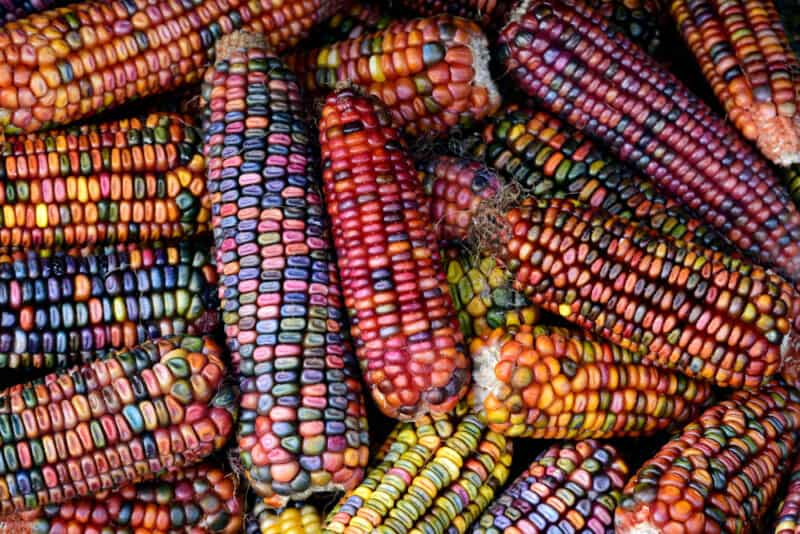
1. Decorations
Without a doubt, using ornamental corn as a fall decoration is my favorite use for the vegetable. Purchasing fresh or dried corn to be used for decorative purposes is expensive, especially if you want to have enough to decorate your entire property (both indoors and out).
When you grow your own ornamental corn, you can use the cobs in tablescapes, wreaths, and other decorations, and you can also harvest the stalks. Cornstalks, even if you live in an agriculture-dominated area as I do, are incredibly expensive. Grow your own, and you’ll have plenty for all of your decorations.
You might even have some left over that you can sell to friends and neighbors. For just a few dollars a seed packet, this is a great way to make a fair amount of money without having to spend a lot of money in return.
2. Food Source
Although sweet corn is undoubtedly going to taste much better on your dinner plate than ornamental corn, you can always try it in a pinch. They are often ground into cornmeal and can be eaten in corn chips, tacos, and other dishes that require this ingredient.
3. Animal Feed
Ornamental corn also serves as a wonderful food source for all kinds of animals. In the late fall, you can feed it to wildlife like raccoons, deer, and birds – or you can feed it to your livestock. Any animal that eats corn (like pigs and chickens) can be fed ornamental corn as a supplement to its regular diet.
Grow Ornamental Corn This Summer for Endless Autumn Beauty
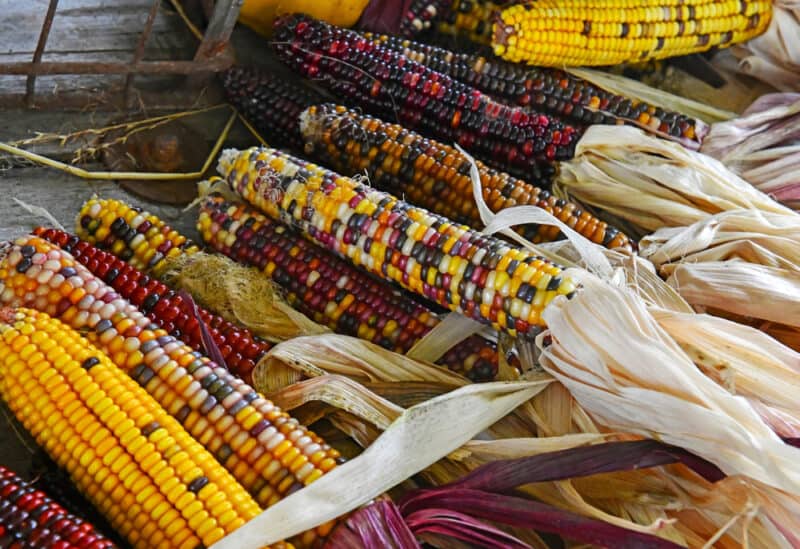
Ornamental corn is one of those plants that always makes the top of my list when it comes to planting a fall garden. It’s right up there with pumpkins and gourds. Not only does growing ornamental corn add a great deal of seasonal beauty to my fall porch decorations, but it also makes a fantastic and nutritious source of food for my livestock after Thanksgiving has passed.
If you haven’t started growing ornamental corn in your garden yet, there are plenty of reasons to give it a try. Consider adding it to your list of things to plant this summer – trust me, you’ll be thanking yourself come fall!
